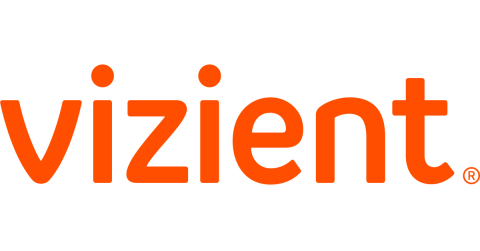Sg2 Impact of Change Forecast Predicts Enormous Disruption in Health Care Provider Landscape by 2029
Sg2 Impact of Change Forecast Predicts Enormous Disruption in Health Care Provider Landscape by 2029
IRVING, Texas--(BUSINESS WIRE)--Vizient, Inc. and its subsidiary company Sg2 today released its 2021 Impact of Change® Forecast that projects a rapid recovery of volumes for most services as COVID-19 abates, followed by a seismic shift in health care delivery as services move from hospitals to other care facilities. The report can be accessed here: https://newsroom.vizientinc.com/content/1221/files/Documents/2021_PR_ImpactOfChange.pdf
“We’re going to see a strong recovery over the next six months in terms of health care utilization, with overall outpatient demand surpassing 2019 volumes. However, not everything will return to pre-pandemic levels. There will be some permanent changes post-pandemic, including sustained shift to virtual, and emergency department (ED) volumes remaining below 2019 levels. In addition, rising acuity and chronic disease burden, trends which were occurring prior to the pandemic, will place increasing demands on the health care workforce and across the system of care,” said Madeleine McDowell, MD, FAAP, principal and medical director for Sg2.
The forecast projects that inpatient volumes will recover to their pre-COVID-19 levels by 2022 and then plateau. By 2029, hospital emergency departments (ED) will see 4.8 million fewer patient visits annually than in 2019 (roughly a 5% decline) as low acuity ED visits shift to urgent care clinics, physician offices and other locations. At the same time, Americans will spend 12.5 million more days in the hospital (9% increase) driven by a rise in chronic diseases, an older population that requires more care and new innovations increasing the number of treatable conditions. Other insights from the forecast include:
Changing Venues for Care
- Hospital outpatient departments (HOPD) and ambulatory surgery centers (ASCs) will continue to experience patient growth (19% and 25% by 2029, respectively), with patient volumes projected to increase by 15 million from 2019 to 2029. The shift in procedures from inpatient to outpatient and from HOPD to ASC will help drive down the cost of surgical procedures.
- Outpatient surgery shift will accelerate as the Centers for Medicare & Medicaid Services (CMS) eliminates all procedures on the inpatient-only list (more than 1,700 codes) and expands the number of ASC-covered procedures by 278 by the end of 2023.
- Physician clinics will see pronounced declines in in-person visits (-19%) as patients shift to virtual, but those patients seen in the office will be more likely to need ancillary services. Non-visit services in physician clinics, such as office-based diagnostics, laboratory testing and imaging, are projected to grow 18% by 2029.
- COVID-19 will leave a lasting impact, creating an enduring demand for specialist care required to support chronic COVID-impacted conditions that span multiple specialties, such as neurology and pulmonology, behavioral health, physical medicine and rehabilitation and cardiology.
Growth of Hospital-at-Home
- There will be a shift of admissions to the home toward the end of the decade with home-based services increasing by 15% to an estimated volume of 474.9 million.
- Health systems are making major investments in their ability to provide care to patients from the comfort of their own home with many programs currently in pilot stage. These programs enable patients that would traditionally be hospitalized, to be managed in the home with remote monitoring and virtual connections to the hospital team, and with in-person visits by a nurse or doctor.
- Part of the growth in hospital-at-home will be attributable to a reimagining of senior care that moves patients out of skilled nursing facilities, which will see a 5% reduction in patient volume by 2029, despite an aging population.
“Policy changes, virtual and digital innovations and the shift to lower cost settings will all contribute to a re-structuring of the current system of care,” said McDowell. “Understanding clinical demand, and where it is shifting, is essential for providers to properly plan for future resource, workforce, facility and program development demands. Health care providers will also need to evolve and pivot to compete with new market disruptors, such as telemedicine providers, Hospital at Home models, and AI-enabled services.”
Click here to read the Sg2 expert insight “2021 Impact of Change Forecast: Post-Pandemic Recovery, Rising Acuity and Ambulatory Shifts.”
About Vizient, Inc.
Vizient, Inc. provides solutions and services that improve the delivery of high-value care by aligning cost, quality and market performance for more than 50% of the nation’s acute care providers, which includes 95% of the nation’s academic medical centers, and more than 20% of ambulatory providers. Vizient provides expertise, analytics and advisory services, as well as a contract portfolio that represents more than $100 billion in annual purchasing volume, to improve patient outcomes and lower costs. Vizient has earned a World’s Most Ethical Company designation from the Ethisphere Institute every year since its inception. Headquartered in Irving, Texas, Vizient has offices throughout the United States. Learn more at http://www.vizientinc.com/
About Sg2
Sg2, a Vizient company, is the health care industry’s premier authority on health care trends, insights, and market analytics. Our analytics expertise help hospitals and health systems achieve sustainable growth and ensure ongoing market relevance through the development of an effective System of CARE.
Contacts
Donna Ledbetter
(972) 830-6321
donna.ledbetter@vizientinc.com
